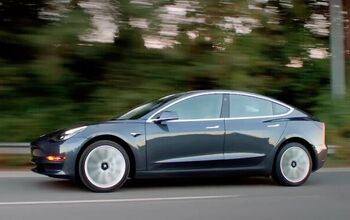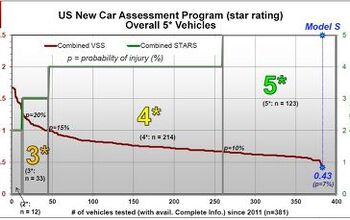NHTSA Revamping Crash Tests
The National Highway Transportation Safety Administration (NHTSA) hasn't revised their crash test rating system since Tonya Harding's ex-hubby ordered a hit on Nancy Kerrigan's right leg (1994). As a result, "starflation;" some 96 percent of all cars sold in America get a four to five star rating. The NHTSA will roll-out new tests and standards in the fabled year 2010. The International Herald Tribune reports that the agency's looking to unify front and side impact results into a single one to five star rating. This should provide a more apples-to-apples comparison of overall vehicle safety, and bring the U.S. in line with European and Japanese testing standards. The NHTSA will add new front-impact tests and a side-impact pole test (sure to provide the Youtube crowd with hours of hilarity). They'll also begin tormenting smaller female dummies, in hopes of improving safety for smaller passengers, and more closely monitor leg crushage. Finally, los federales will note standard safety equipment such as electronic stability control, lane departure and forward collision warning systems in safety rating summaries. Welcome changes all.
More by Edward Niedermeyer


































Comments
Join the conversation
Re: Photo... Wow... some light pole!
I'd like to know which cars make up that last 4 percent!
I've done crash tests a number of times. The small sampling done for official government ratings is a real concern. When GM had a car that got miserable results, the government let them have another try. That car, supposedly identical the the first one, passed handily. Bob
It would be nice if every possible combination of engine, transmission and driven wheels didn't need a separate vehicle tested. It really puts imports, especially Europeans at a disadvantage. For example, a 328i sedan, 328i coupe, 328Xi sedan and 328Xi coupe each need a separate vehicle crash tested, one each for automatic and manual transmissions. Essentially, BMW must crash eight separate cars to sell "328s" in the US. Will their crash test results really be that different? Besides, if they pass testing for Autobahn driving (regularly at 80-120 mph), will they really have trouble passing testing for the US where the speed limit is ca. 65 mph?